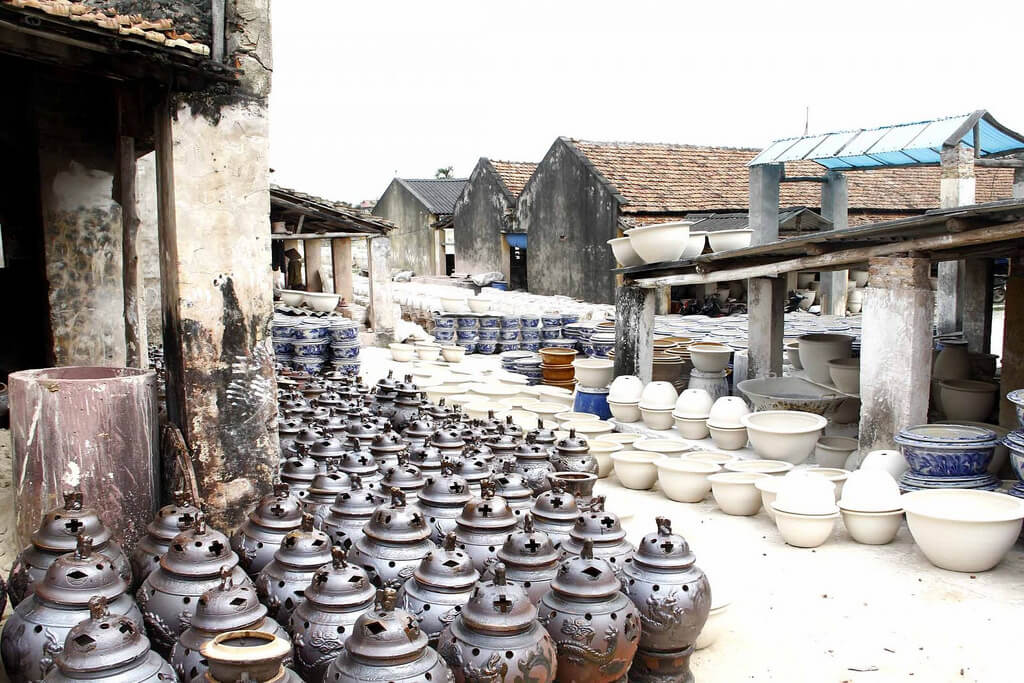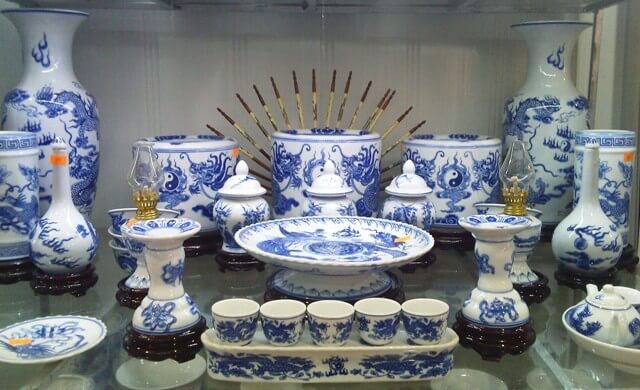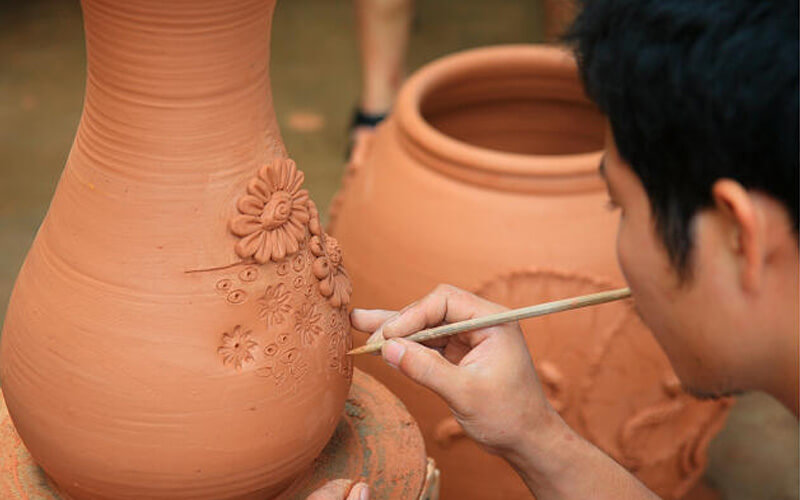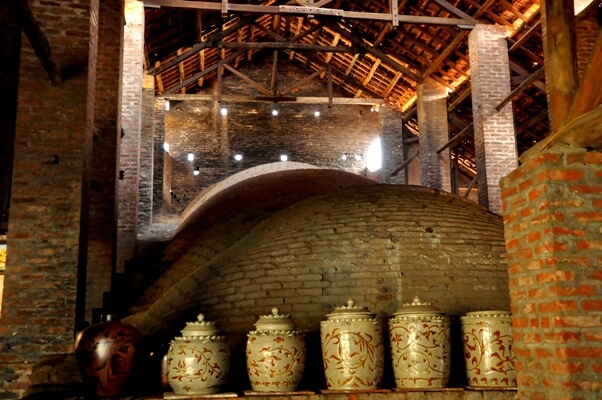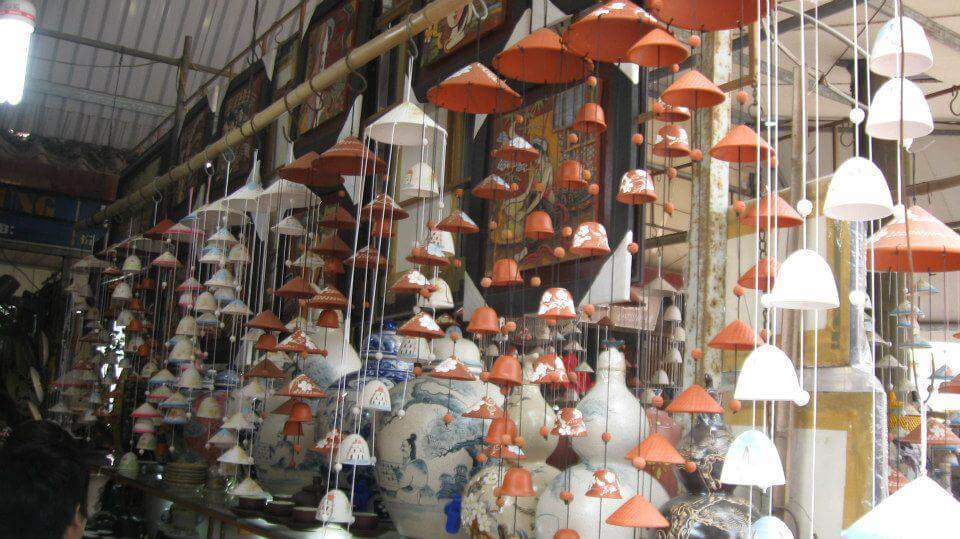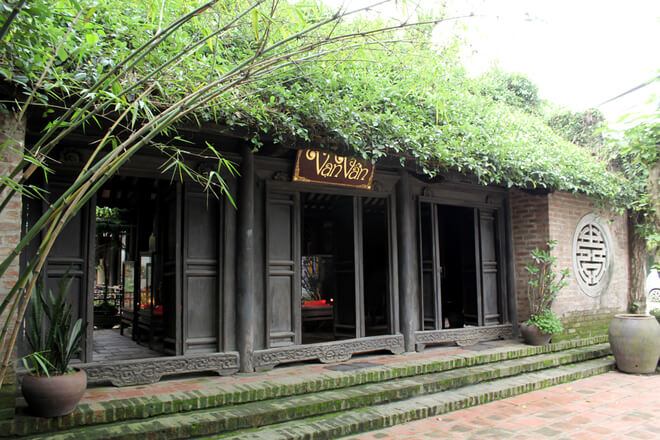1. History of Bat Trang Pottery Village
It was said that Bat Trang village was established under Ly dynasty in the early 13th century. Initially, there are a group of potters living in Bat Bo village, which located on Thanh Hoa province- an area of Vietnam Central Land. After the first emperor of Ly dynasty removed his capital to Thang Long (the previous name of Hanoi capital). Bat Trang was considered as an auspicious land for potters because it is extremely advantageous for waterway transportation, high quality of white clay and only 12km for the access to the new capital. Therefore, Bat Trang gathered many skillful potters in order to develop their own traditional careers. With the development of trade between 15th-16th centuries, Bat Trang village went through the most prosperous period, where the upper classes were main consumers of ceramic products. Nowadays, those craft products have become more popular in Vietnamese’s daily life.
A yard for storing pottery products in Bat Trang Village
2. Bat Trang pottery products' features
There is a variety of ceramic products in Bat Trang village, which meet the different demands of consumers, from daily products (pots, plates, bowls…) top the luxurious products for decorations and worship purposes. Outsides, each ceramic product are covered with 5 different types of glaze: blue and white, ivory, moss green, iron brown and cracked. Each category of glaze brings a unique feature for pottery items.
A set of tea pot with moss blue color
Moreover, the Vietnam ancient motifs are also carved elaborately by talent workers with the typical pictures of Vietnam ancient art such as dragon, Asian flowers and birds…
Objects for whorship purpose drawn with Asian dragon pictures
3. How to make a ceramic products
To make a perfect ceramic product, potters have to conduct lots of complex process, which requires the skillfulness and meticulousness. Firstly, local people collect a special kind of clay to process into materials for ceramic goods.
After that, clay will be shaped into different objects and dried under sunlight. Then, potters crafts and draws the traditional motifs into each of those items before it is covered with a layer of glaze.
A potter is elaborately carving daisy on a vase
Finally, ceramic items are put into kilns. This is also a difficult process because it requires the high skills of craftsman, who can keep fire stable and avoid the minimum low quality products.
A an overview about ceramic furnace in Bat Trang Village
4. Useful suggestions for a trip in Bat Trang Pottery Village
Visitors can make pottery items by themselves when taking a tour around Bat Trang village. Along with discovering the complex process to complete a ceramic items and then, they can learn how to create a simple products with the guidance of potters.
Visitors also comes pottery markets in Bat Trang village, where sells every sorts of Bat Trang's products, from daily items to decorations, from normal objects to high quality products
A corner of Bat Trang pottery market
Wind Bell in Bat Trang pottery market
Situated on a corner of Bat Trang village, Van Van house is well-known as the living museum of Vietnam pottery art with more than 400 ancient ceramic items in the period of 15th -18th centuries. Especially, the products of Bat Trang pottery account for a large amount of those antiquities.
The facade of Van Van ancient house











































